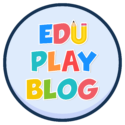You have the power to create a strong classroom culture by making intentional choices about how you manage your classroom. No matter what subject you teach and what preconceived notions a student has about that subject, YOU can ignite their love for learning. It all starts when they walk through your door.
When students walk into the classroom, they should feel excited about what’s going to happen. When I first began teaching in 2009, it was all about the anticipatory set or what’s better known as your lesson’s hook. The anticipatory set, or “hook,” is all about the methods teachers use to gather students’ attention before you start teaching your content. Some teachers consider the lesson hook something of urban legend. Having never experienced or witnessed a successful lesson hook in person, some will believe that engaging your students in your content before you begin can only be accomplished under the right circumstances, with the right students, or under the light of a full, blue moon. Some teachers feel like it’s a waste of time. But for me, at this point in my career. I know what exactly what engages kids.
The secret isn’t something experimental or even innovative. It’s been right under our noses this entire time: its toys! Even with all the technology in the world, when we look at our students as who they really are: children. It’s an undeniable fact that children love toys! Big kids, young kids, teenagers, they all come into school with a playful energy. Sure the types of toys change as kids grow up, but no matter how hard a student tries to resist the allure of a good toy, when they see a ball they can’t help but pick it up and toss it in the air.
Whenever I make time to play, student engagement in the lesson increases. Bringing in simple toys, makes engaging with content more memorable and fun! When I read the room and notice that kids aren’t listening to one another during a class discussion, I bring out “The Mic.” I use a simple beach ball as a talking piece in my classroom. I state the rules for using it and toss it to a student. Students immediately perk up!
I had to accept the fact that play is essential for children. We must are give kids a chance to do more than just receive the lesson. They need an opportunity to engage with each other and what they’re learning. Whether its partner work that allows students to collaborate while answering a question, or a whole class activity that requires every student to participate, kids are a part of the learning community. They are embedded in the lesson, and without them, the lesson can’t happen! Play doesn’t just engage kids, it empowers them to participate in the learning process. Play introduces students to how learning was always intended to be: collaborative, empowering, motivating, and fun.
How awesome would it be if all students felt empowered in the classroom because teachers created intentional opportunities for them to play? As a teacher, think about how students interact together, encourage one another, motivate each other, and teach each other more than just the lesson. Creating space for playful interactions to occur between students teaches them how to engage in meaningful relationships with one another and the learning material.
When you make time to play, you have the opportunity to see new or unexpected leadership qualities form within students; you notice the caring ways some students encourage one another; you notice them place their arms around each other to show their comradery and the fact that they are in this together. Play creates the space for this to happen, and using a few simple toys as tools to enhance the learning process will help bring a joyful shift to your classroom community.



